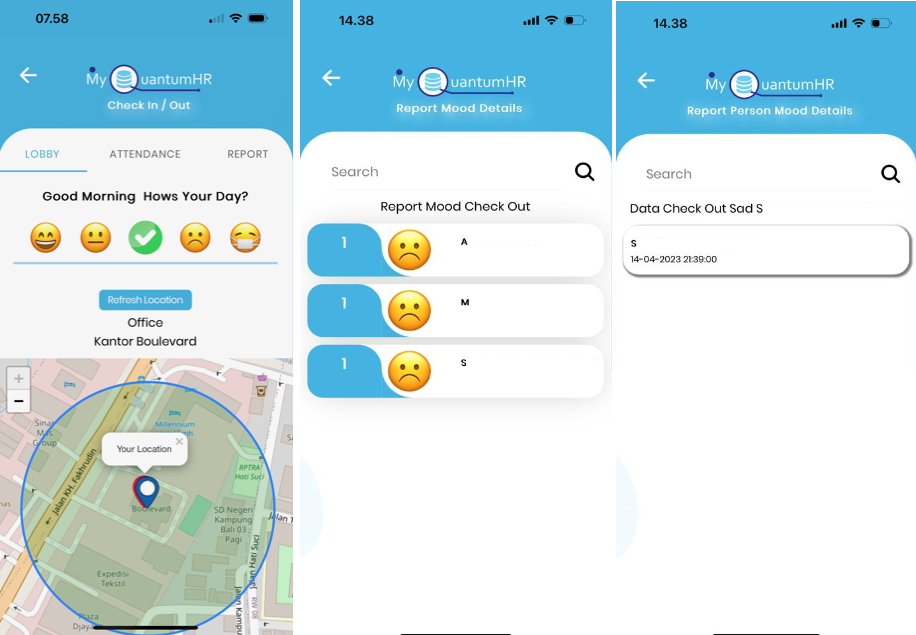Emoji helps the interaction among employees, superiors and HR.
From the results of the 2020 population census, BPS (Central Statistics Bureau) records that Generation Z (born in 1997-2012) and the Millennial generation (born in 1981--1996) are the majority Indonesian population.
Proportion generation Z is 27.94 per cent of the total population, and the millennial generation is 25.87 per cent. Most of these two generations fall into the productive age category.
At the same time, technology and social media, including Facebook (2004), Youtube (2005), Twitter (2006) and Instagram (2010), have changed the way we communicate more openly by expressing ourselves and socializing more time through social media. This social media introduces emojis to comment on other parties' posts and can interact with each other to express their emotions. Facebook, in 2009, added the emoji ♥ , °o° wow, :( sad and ⋋_⋌ angry, so that users can express feelings rather than just like.
With changes in technology and social media, everyone, especially the millennial generation, has become accustomed to communicating through gadgets. Technology has changed how we learn, get entertained, communicate and interact.
Emojis have become one of the complements to express in our daily communication via WhatsApp or commenting on Facebook or Instagram. Thus, these tiny icons might reveal certain aspects of our personalities. Based on some articles, among others, from the South China Morning Post on January 15 2022, Doris Wai wrote an emoji on social media explaining the word you can't say. Doris Way quotes psychologist Leah Selakovic "Our brains … create connections between emoji and emotions representing meaning.
In today.com's social media article on November 14 2016, written by Aleksandra Atanosova, according to psychologist Albert Mehrabian, in communicating, writing/words only makes up 7% of us understanding someone. The rest of body language (including smiles and nods) is 55% in face-to-face interaction, and 38% is intonation, accent, and voice speed. Emojis replace body language and expressions in written communication to trigger responses from people, including positive or negative feelings. In the article, based on Swiftkey 2 research, the most common emoji are smiling faces at 44.8% and sad faces at 14.3%, apart from other emojis.
According to the definition of mentalhealth.gov, mental health is emotional, psychological and social well-being. With the COVID-19 pandemic, our physical health is not only bothering us, but our mental health is also affecting us. Saturation, loneliness, economic pressure, and work and family by working at home or reduced income affect our mental health.
Based on information from the Director for Prevention and Control of Mental Health and Drug Problems, the prevalence of people with mental disorders is around 1 in 5 of the population. At the same time, in Indonesia, there are only 1,053 psychiatrists, so we must keep everyone mentally healthy. Thus preventing mental health from occurring and understanding people's emotions are essential things that need to be considered by superiors and the Human Resources department. So we made a breakthrough to help employees express their feelings when working outside the office and at home to continue the communication process.
We chose four simple emojis to be able to express someone's emotions when they are about to work or finish work, which are
: ) happy
: l neutral
: ( sad
๑_๑ sick
The purpose of myquantumhr is to include emoticons so that employees can express their emotions to superiors or HR so that Supervisors/Managers or HR can pay more attention if there are employees who need attention.
If employees do not want to express their emotions, employees can choose ✅ to report their attendance or completion of work.
Even though we don't meet face to face, myquantumhr can help superiors, or HR know who is experiencing sadness/illness and when it occurs. Thus the system allows us as superiors to interact with subordinates and ask about the current situation. Therefore Myquantumhr can initiate interactions between superiors and subordinates before it's too late, even if they don't meet in person. The system could detect employees getting bored or sick before the employees do not perform well or decide to resign. By knowing this, the superiors could know and do coaching or mentoring or pay more attention to employees in a state of sick or sadness. That is one of some benefits and a leading inovative from myquantumhr comparing with other HRIS.
